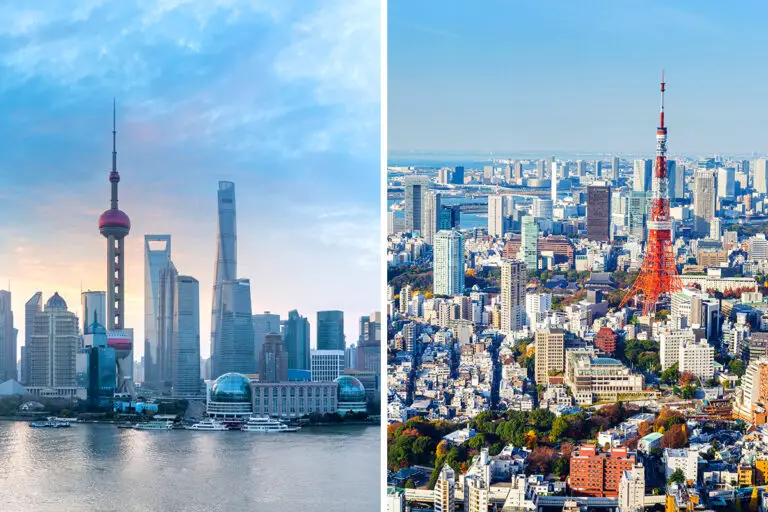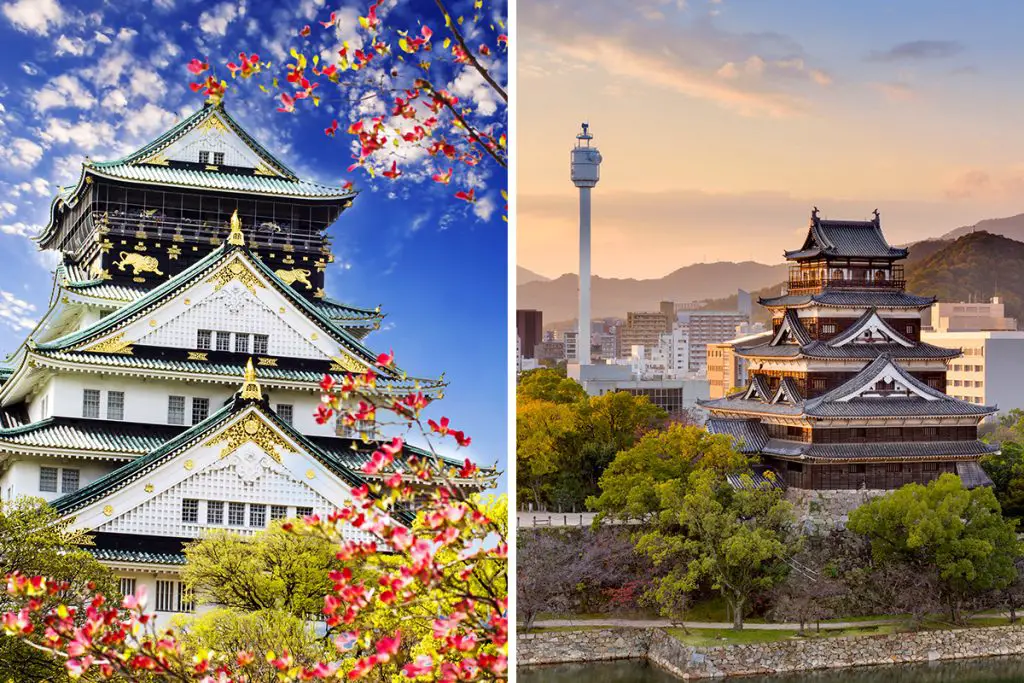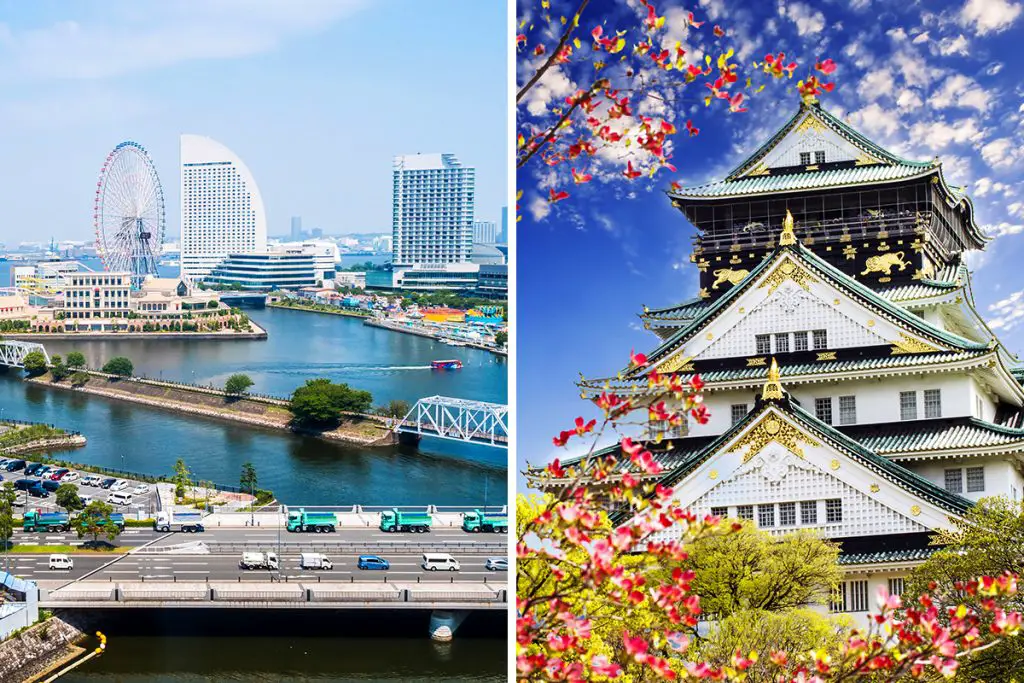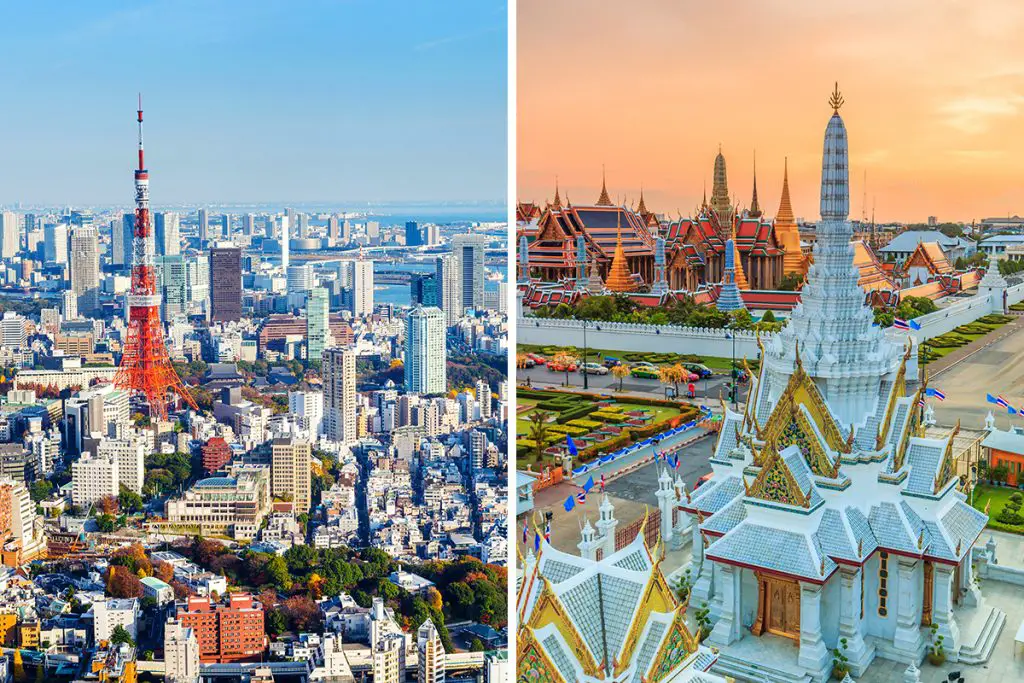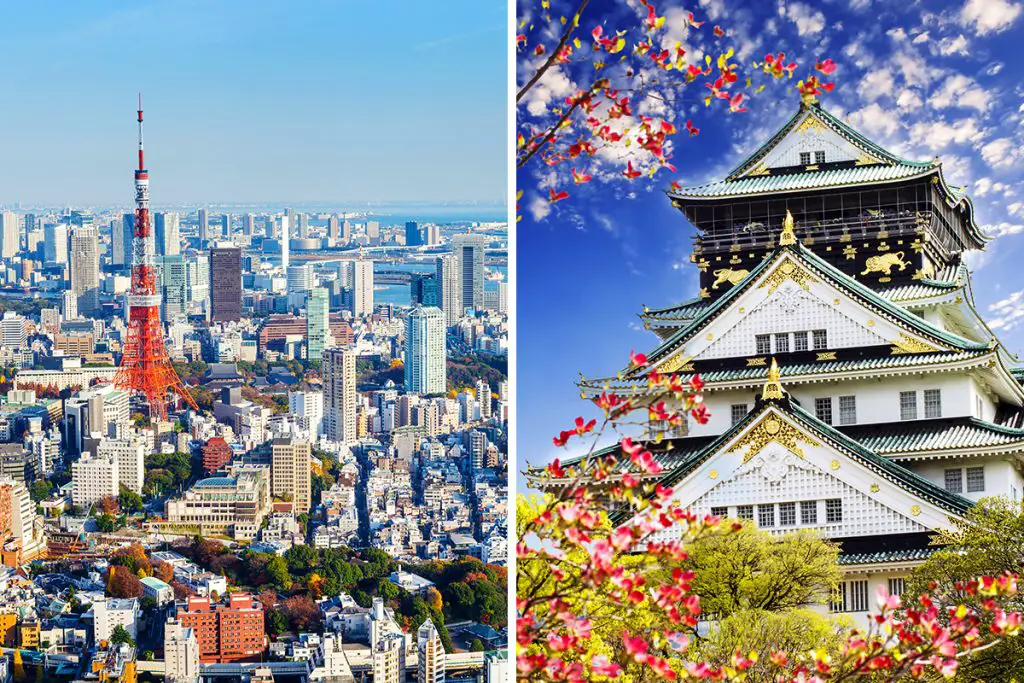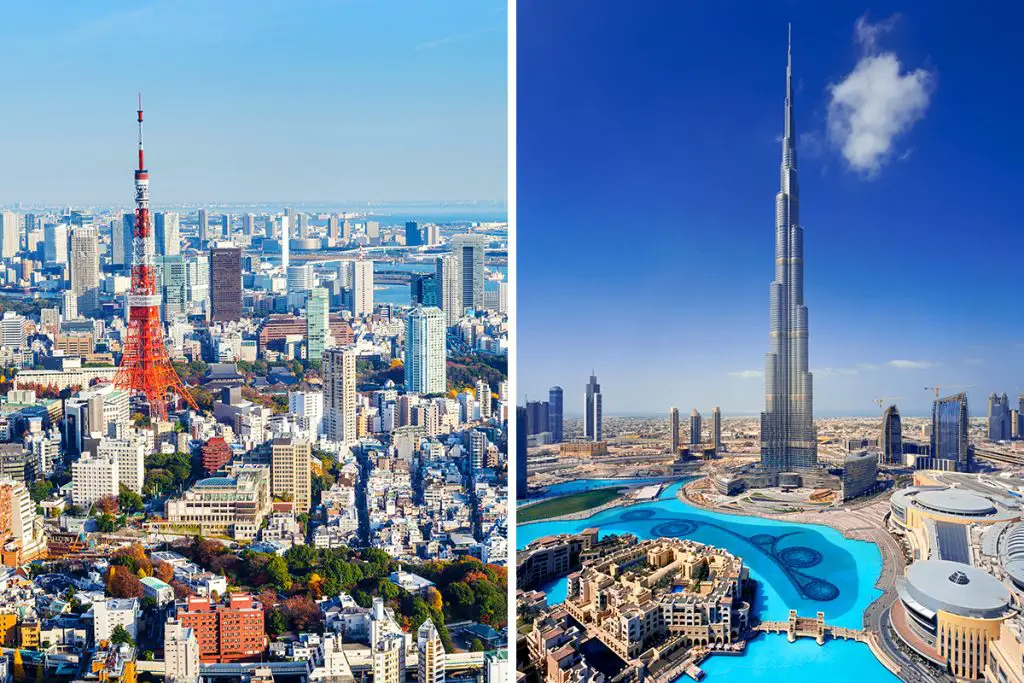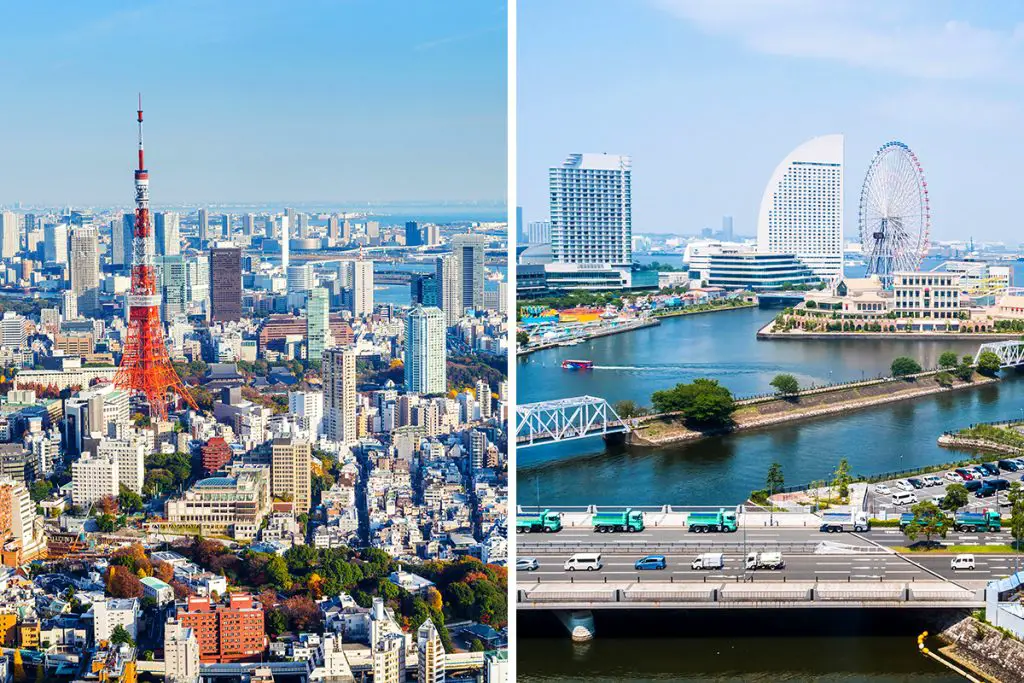With an underdog in the mix, it all boils down to what activity you have an affinity for the most. And whether either location has it or does a better job. This only makes it awkward to choose a winner from the two, but read this article to help handle the hullabaloo.
Shanghai
This tech giant of the People’s Republic of China is what you must add to your itinerary when in China. It’s a city that’s always on the move, feel it in the parks and theme parks, bazaars and markets, and the transportation network. Feel it most especially from the towering structures high above the city.
Its urban vitality augments its addicting allure. So before you set Shanghai on your bucket list, read some more about what urban highlights the place has to offer below.
What Makes Shanghai Unique
Sky-High Shanghai
Shanghai homes a number of world-record-breaking skyscrapers, not necessarily because they’re the tallest, but because their special attractions make them worthy to ascend to greatness. With that intro, there should be no reason for you to think twice to experience what they have to offer. Below is the trinity of the most famed buildings.
Step on the glass floor of Shanghai World Financial Center’s observatory and test your mettle. You’ve probably guessed that said glass floor is hundreds of feet above ground level, and you’re not wrong! Still want to try it?
If you think that a visually twisting building is a scary prospect, what do you think about the world’s tallest twisted tower, Shanghai Tower? Don’t worry though. It’s a tough-as-nails engineering feat, which also is keen on advertising that it has the world’s fastest elevator.
And the last of the trinity of towers is JIN MAO Tower. Its observatory has a cool feature fit for daredevils. Walk to the edge of the glass skywalk with no guardrails to experience your gut and gonads go all the way up to your gullet.
Now you are wondering why they are a trinity… it’s because they are within walking distance from each other. So going to one all but guarantees you will be tempted to hit the next-door neighbor.
But Shanghai is not all about just buildings for occupancy. The destination also has massive a communications tower that serves the purposes of tourists as well.
The Oriental Pearl Radio & TV Tower is a prominent attraction for its attention-drawing sleek sci-fi shape. Ride its scenic elevator to the top ‘capsule’ and access the revolving restaurant or soak in the sights. The vista to the river is something to behold and should not be missed.
Note that Shanghai is an ever-growing city, and each time you visit, you’d probably see a new record broken by an up-and-comer. So, don’t wait until the trinity becomes a thing of the past, make your way to Shanghai fast!
Parks and Theme Parks
Shanghai is filled to the brim with nature-rich parks and theme parks of the big international and local players. With that in mind, there is much to choose from if you want to take things easy or get your adrenaline pumping.
If you are a Disney fan or have children in your group, go for Disney Shanghai. Interact with the updated roster of the Disney Princesses in the Enchanted Storybook Castle. What stands out even more, though, is the cultural backdrop masterfully intertwined with the design and planning of this instantiation of Disneyland.
If you like marine life, then you’ll definitely love Shanghai Haichang Ocean Park. Shake hands with their marine mammal celebrities in their live shows. And that’s only half of what the park offers. Get on board their assortment of theme park rides. Try out their interpretation of what a roller coaster should be, all the way to their uncommon vehicles with equally uncommon themes.
What if you’re not feeling the whole water-animals vibe? The Shanghai Wild Animal Park should be of interest to you. Head out in a safari vehicle to connect with the uncaged wildlife. Sit in on their animal performances as you watch elephants stand on their hind legs. And a whole lot of other animal displays.
You’re probably thinking that the abovementioned parks lack the cultural underpinnings that you are expecting in Shanghai. So how about…
Stopping by Yu Garden, Tan Garden, or other similar gardens. Not exactly parks per se, but they definitely give off the associated ambiance. Couple that with the water features and Chinese art and architecture, and it’ll surely bring your park experience to another level.
And if touristy parks just do not work for you, classic configurations for rest and relaxation are available in Changfeng Park, Peoples Park, and Huangpu Park, to name some.
Riverside Escapade
Shanghai without its biggest water feature, the Huangpu River, becomes simply a watered-down destination. And if you so decide to not even walk its banks, you’re missing out on the quintessential element that has made Shanghai the powerhouse that it has become. Now, if you journey on the billows of the river, that makes your stay even more worthwhile!
Negotiate the river on boat tours or river cruises for the ultimate views from the water. Try a trip at night to get a display of the city lights as they sparkle before your eyes.
While on the river, pass by prominent bridges, and more importantly, see the trifecta of Shanghai’s ultimate skyscrapers. Not to mention seeing the funky landmark, the Oriental Pearl Radio & TV Tower, is one of the highlights of the tour.
If seasickness is something you worry about, The Bund should give you more than enough of the river experience without much of the moisture factor. Gaze at the architecture in this strip that represents the various eras in the history of Shanghai. Identify Neoclassical, Beaux-Arts, Gothic, and Baroque styles.
The Bund also has other curiosities at strategic places along the way. For one, the flower wall is a wall strapped with flower pots in a vertical array. Inspect the masterpiece of artists who painted the wall, as it were, with colorful flowers. Then there’s the sightseeing tunnel. Stare in awe at the artistic lights as they blur à la warp-jump in Star Trek while you ride the rail vehicle to the other side.
But sometimes modern-day scenes can get quite repetitive. Therefore, going back in time seems more appealing. Your time machine of choice? The tributaries and distributaries of Shanghai give the DeLorean Time Machine a run for its money—
Along the waterways of Shanghai, come across many ancient water towns that will fulfill your fantasy of time travel. Fengjing Water Town and Zhujiajiao Ancient Water Town are two famous towns that fit the category of places frozen in time. Eye the antique homes and bridges that dot the network of streams and rivers on a boat outing.
Whatever your vision of a river escapade is, Shanghai is sure to have something in store for you.
Experiences Hiding in Plain Sight
In every city, there are places that only those who dare to go on an adventure get to see. It’s more for those willing to get lost in the chaos of the city to go explore the nooks and crannies for hidden gems. But if you feel that that is a tad too burdensome for your liking, there are tours specifically for the cause.
Get to feel the hustle and bustle of a marketplace that has an old-world charm to it. Old Town market features ornate oriental architecture with pointy roofs and wooden veneers, to say the least. And the things for sale? The place is a mishmash of wares. Discover food stalls, bistros, knickknacks, apparel, and so much more. Find your perfect souvenir in here!
If you don’t have a need for retail therapy, you can always do a chill sightseeing tour of ancient architecture and interiors. Private-turned-public gardens and houses are within reach on a walking tour. It’s the perfect contrast to a modern-day jaunt in a commercialized area.
You don’t have to go to a museum to appreciate the fine art of China. The streets and old houses are littered with stone reliefs, guardian lions, and oriental gargoyles. Get to see something unique if you know where to fix your gaze… that’s where a guide helps. You’ll be surprised at where your next photo op will come from.
Tokyo
Tokyo is a notch above most destinations, which almost instantly makes it a cut above the rest when it comes to Asian destinations. Its world-renowned food scene and marketplaces are remarkable by themselves.
Perhaps the chink in its armor is it is, first and foremost, a highly urbanized destination. But that should not dissuade you. It does have and loves its green spaces, has a ton of theme parks, and a whole other set of surprises waiting in store. So read on and start to explore!
What Makes Tokyo Unique
A Dedicated District for Old Tokyo
While Shanghai has its Old Town, Tokyo has its Asakusa district. Both of them sell the atmosphere of centuries past.
At Asakusa, you can expect massive sculptures and structures. Enter gates, sightsee temples and shrines, and shop in an old-style shopping street. Then there is also the interface of old and new, so expect modern-day shopping locations as well. Some of the well-known landmarks that clearly define what the district is about are enumerated below.
Japan, in general, is famed for its grand gates. One such gate is found in Asakusa and is called Kaminarimon, or Thunder Gate. Inspect its impressive features such as the gargantuan lantern, with lettering for “thunder” and “gate,” and two life-like and threatening Nio statues—the perfect photobombers.
Further in from the Kaminarimon, you’ll find the 7th-century Sensoji Temple. It’s one of Tokyo’s senior temples. It’s a spiritual place for Buddhists to practice their faith. Say a prayer here or peek inside the temple from a respectful distance.
If you’re in Tokyo in May, stop by Asakusa Shrine for the Sanja Matsuri festival. Though the whole of Asakusa is filled with revelry at that time, the focal point is in this shrine. Brave the crowds to see the portable shrines of Shinto deities being paraded to their final destination/s.
After you’ve had your fill of sights, have a treat at Nakamise Shopping Street. This street is several feet in front of the Thunder Gate. Sample the various street food and inspect souvenirs on the well-organized rows of stalls dressed in classic Japanese architecture.
The whole of the old-style grounds of Asakusa has many things for you to marvel at, besides the superstars above, to round out your visit. Drop by the purification fountain, incense burner, a collection of small shrines left of the main temple, smaller gates, sculptures, and statues, among others.
Rich Events Scene
Tokyo is thick with culture and a strong tradition. Not only that, more modern events that showcase the prolific technology sector are something you should look forward to joining.
First off, Tokyo has several large festivals worth considering. Plan your trip to target one of them to get the most out of the cultural experience. Sanja Matsuri, Fukagawa Matsuri, Kanda Matsuri, or Sanno Matsuri… choose your adventure.
Historically, Sanja Matsuri is celebrated on the third week of May. Listen to the beat of Japanese drums and flutes filling the air. To get the most out of this event, head to the Asakusa district. The event is kicked off with a parade with the complete roster of Edo-period characters—priests to geishas. After that, eye the different portable shrines lifted by devotees in their festival garb.
Mid-May is the time for Kanda Matsuri. It’s one of the top festivals to expect in Tokyo. The theme and activities are pretty much like Sanja Matsuri, but it is more far-reaching. Expect Shinto rituals, costumed parades, and portable shrines.
Go to Tokyo in mid-June for the Sanno Matsuri. It is not unlike Sanja Matsuri. It does travel a different route, however. Note that it has the highlight of stopping in the Imperial Palace for some ceremonial rituals.
Planning for an August escapade? Fukagawa Matsuri will be waiting for you. The characteristic of this event beyond the portable shrines and parades is the water throwing.
Now that the traditional events are out of the way, have a taste of Tokyo’s modern-day offerings—
Living life in the fast lane? Go to the Japan Mobility Show, an exhibit of the next generation of vehicles. You a gaming enthusiast? Gasp with anticipation as the industry titans unveil new titles or hardware in the Tokyo Game Show. Love Anime? AnimeJapan is the premier convention for all things Anime. Hankering for the latest in the IT and electronics world? CEATEC has got you covered.
Ultimately, when you decide to choose Tokyo, research new updates and select the date that matches an event that speaks to you.
Trend-Setting Specialty Food
Japan, overall, has been a key player in terms of culinary greatness. And Tokyo is one of those places that has contributed to the ever-increasing level of Japanese cuisine.
The food scene here is mostly influenced by the freshest seasonal seafood. And with the Tsukiji Outer Market and Toyosu Market nearby, you are guaranteed a sea-to-table experience in almost every eatery.
Want the most popular seafood dish there is? Nigiri-zushi is your sushi. Taste that fresh fish on a ball of Japanese rice dipped in a wasabi-soy concoction… yum!
Feeling the need for something crunchy? How’s a batter-coated piece of seafood deep-fried to perfection sound? Tokyo, in the Edo period, used seafood for tempura instead of vegetables, and it now is the norm. Have tempura in specialized restaurants, it’s what the locals recommend.
Tokyo is not all about food preparations from a catch from the sea, though.
For the sweet tooth in you, soothe your cravings with Tokyo’s wagashi. Mostly these are red-bean-filled pastries in the shape of dolls or animals.
And there are other dishes developed locally that are not the most common but have spread throughout the region, like Chankonabe, Monjayaki, and Tsukudani.
The first is a hot pot dish fit for and eaten by sumo wrestlers. The second is a pancake that’s a slab of vegetables, seafood, and meat. And the last, which is more on the exotic side, is food preserved by cooking in soya sauce and sweet sake. The usual ingredients prepared this way are fish and shrimp, seaweed, beef, or grasshoppers [you read that right].
Now, where exactly can you get these delectable dishes, you ask?
There are a ton of dining locations for you in Tokyo. Around train stations, inside the markets, entertainment districts, and even in department stores, casual dining can be located with ease. But the most common of all is called the Izakaya, a small drinking establishment serving small dishes. Find them in droves at the following izakaya districts: Shinjuku, Yurakucho, and Asakusa.
Get on top of their skyscrapers and major hotels if you’re into the fine dining experience. Find some of them atop skyscrapers in the Marunouchi side of Tokyo Station, and in the districts of Shiodome, Shinjuku, Ginza, and Azabu. Do the research for the exact Michelin-star joint you are looking for.
One thing is for sure when in Tokyo, don’t miss out on the seafood, even if it’s one of those conveyer-belt sushi joints because satisfaction is guaranteed!
Cherry Blossom Viewing
One of the premier features of a trip to Japan is the hanami or cherry blossom viewing. Coincide your trip with this ‘natural’ event. The great thing about this is that you can find parks all over Central Tokyo where you can observe the wind carrying the petals in a glorious swirl. The time of the year can be quite tight though.
Your trip is in April? You’re in luck, early April is the time of year several parks and gardens give you the full experience.
In Central Tokyo, drop by free parks like:
- Ueno Park (view the early blooms),
- Chidorigafuchi (ride a boat in the Edo castle’s moat),
- Sumida Park (view along the Sumida River),
- Yoyogi Park (do picnics here),
- Asukayama Park (scan the hilltop landscape),
- Meguro River (enjoy the man-made appeal of the concrete canal lined with cherry trees),
- Inokashira Park (ride a boat in the central pond), and
- Aoyama Cemetery (solemn place for hanami).
Pay around USD 3–4 to enter—
- Shinjuku Gyoen for its wide blooming period (i.e. bigger chance of viewing even if you arrive late-ish March to early-ish or mid-April),
- Koishikawa Korakuen is known for the weeping cherry trees, and
- Koishikawa Botanical Garden for a calmer ambiance while viewing.
If you are staying outside Central Tokyo, it makes more sense not to jostle the crowds. Go to the following in early to mid to late April instead:
- Showa Memorial Park (bicycle the lanes of one of the largest public parks in Tokyo, which has a late blooming also),
- Koganei Park (traipse their cherry garden), and
- Mount Takao (hike this popular destination and witness the bloom in a sort of wild setting)
Public Baths in the City, Japanese Style
When thinking of a public bath in a Japanese setting, you’d probably be imagining a mountainside hot spring retreat in a remote outdoor location. That is the goal, really, but since Tokyo is a city, the natural hot springs aspect is not readily available. Nowadays, thanks to engineering know-how, naturally heated water from natural sources is readily available in the middle of the city.
If you are okay with large bath complexes, get into LaQua’s real hot spring pools and saunas. Have a massage, among other relaxation services. Niwa no Yu is a contender in the large-bath space. Enjoy the large Japanese garden, hot spring pools, and relaxation services. Almost every large complex has its unique appeal so getting to the one near you should be more than enough.
Looking for something a bit more intimate? Discover Tokyo’s small bathhouses. Satisfy your onsen needs without much of the fluffy features in places like Oshiage Daikoku-yu, Atami-yu, and Minami Aoyama Shimizu-yu, to name a few. Although, not all the small bathhouses guarantee natural hot spring water so that’s something to look out for.
Do note that there is an unspoken rule when going to Japanese baths: nudity is the norm. So, if you are a bit apprehensive about putting on your birthday suit, consider selecting more lenient bathhouses. Be warned as they are few and far between, however.
Which Is Better – Shanghai or Tokyo?
Overall, Tokyo is better, though not many agree because of differing perspectives.
If you look at things from public transportation, Tokyo is overwhelmingly extensive, efficient, and user-friendly. They also have a ton of English signage to make your life easier as a visitor. Shanghai is a close second with its extensive network of buses and taxis. But the limited English signage can make you confused quite easily, which is apparent in their subway system.
For the food scene, Michelin stars may guide you to the top spot, but that isn’t all there is to it. Shanghai does not have much of a food culture compared to Tokyo’s prolific love for food. Yes, Shanghai has lots of street food options to sing songs about (e.g. xiaolongbao), but Tokyo just has more in almost every turn, e.g. izakayas.
The historic presence in Tokyo is also more pronounced. With it being the seat of the Japanese empire, find temples, shrines, and the empire’s Imperial Palace. Some say Shanghai cannot compare to that because it was a colony. It has traces of Western influence intermingled with traditional Chinese culture and architecture. Look at the City God Temple, Yuyuan Garden, Bund waterfront buildings, and the French Concession.
In general, both cities have a lot to offer and are worth visiting, but which one is better for you will depend on your personal preferences even if the evaluation may seem skewed in one direction.
FAQ
Shanghai Disneyland vs. Tokyo Disneyland
Shanghai Disneyland and Tokyo Disneyland are two of the most popular theme parks in Asia, each offering a unique experience to visitors. Shanghai Disneyland, which opened in 2016, is Disney’s newest and largest park in Asia, while Tokyo Disneyland has been a beloved destination since 1983.
One of the main differences between the two parks is the cultural influences that they incorporate into their attractions. Shanghai Disneyland has a strong Chinese influence, with elements of Chinese culture infused into many of the rides and attractions. Tokyo Disneyland, on the other hand, has a more traditional Disney feel, with many of the classic Disney characters and themes present throughout the park.
Another major difference is the size and scope of the parks. Shanghai Disneyland is much larger than Tokyo Disneyland, with more attractions and entertainment options available. However, this can also mean longer lines and more crowds to navigate.
In the realm of main attractions, Shanghai has the Enchanted Storybook Castle, which is the largest Disney castle in the world at the time of this writing. Get a jam-packed interactive storybook experience in the castle’s interior.
For Tokyo Disneyland, it boasts its innovative trackless ride technology in Pooh’s Hunny Hunt. That all there is to it, you say? Not even close. With Tokyo DisneySea right next door, going to Tokyo is all the more appealing.
Ultimately, choosing between Shanghai Disneyland and Tokyo Disneyland depends on personal preferences and interests. Those looking for a more immersive cultural experience may prefer Shanghai Disneyland, while those seeking a more traditional Disney experience may opt for Tokyo Disneyland.
Shanghai to Tokyo Distance
The distance between Shanghai, China, and Tokyo, Japan, is approximately 1,430 kilometers (888 miles) by air.
The distance between Shanghai and Tokyo by sea route is approximately 1,100 nautical miles or 2,040 kilometers.
There is no direct sea route between Shanghai and Tokyo though. It is possible to take a ferry from Shanghai to Osaka, Japan, and then travel by land or air to Tokyo. However, the journey time and cost can vary greatly depending on the mode of transportation and the specific route taken.

